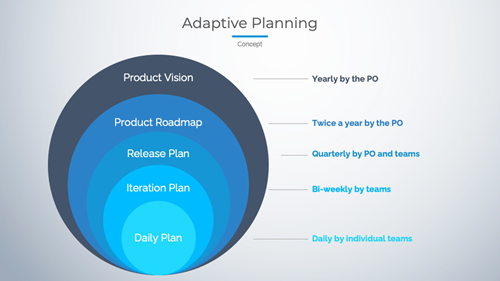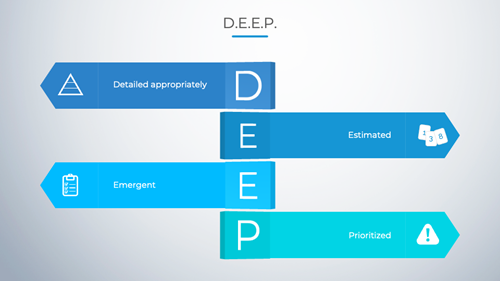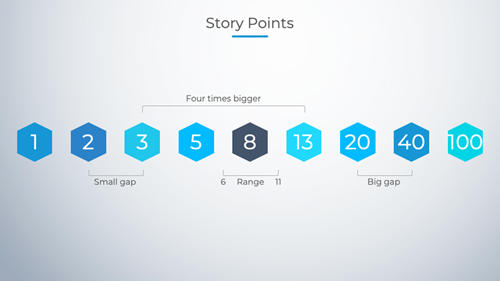Five practical tips for gaining predictability in an Agile environment
Agile as a way of working is known for its flexibility and openness to constant change. Organizations do not function in an isolated environment, everything around them is changing all the time, and they have to be able to handle it. That’s why the change in the plan is inevitable. The logical question is – can we gain predictability even if there are changes on each step? The short answer is yes – we can. I won’t say that it is easy. It requires, in the first place, knowing the best practices, following them, and finally, discipline and consistency toward their application.
31 Oct 2022Agile as a way of working is known for its flexibility and openness to constant change. Organizations do not function in an isolated environment, everything around them is changing all the time, and they have to be able to handle it. That’s why the change in the plan is inevitable. The logical question is – can we gain predictability even if there are changes on each step? The short answer is yes – we can. I won’t say that it is easy. It requires, in the first place, knowing the best practices, following them, and finally, discipline and consistency toward their application.
Tip #1: Apply all levels of adaptive planning.
You have to have a clear vision for your product and sync it with your product backlog. Having a vision is the highest level of your planning. It is done once or two times a year, but without it, you will not have a goal you want to achieve. All decisions and priorities are aligned with the vision.

Almost all teams practice daily and sprint planning, about 70% the level above (release planning), and as we go higher, the percentage of Agile teams that do this type of planning reduces. All levels of planning are essential and have a purpose. If you skip a level, your team probably struggles with gaining predictability.
In the end, your product backlog should mirror your vision. If the vision for the product development and the product backlog don’t have much in common, there is probably something that is not done right.
Tip #2: Manage your product backlog

Are you familiar with the Scrum framework? :) Yes, this is not a joke. The chart starts with the Product Backlog and not in an accident this is my following advice to you – the product backlog is the main tool for planning in Agile, and if you want to gain predictability in your project, you have to take care of your Product Backlog. The product backlog must always be in good shape during the project. It does not happen by itself. The refinement process here is critical since this process aims to have a “refined” (or “groomed” as it was called in the past) backlog. As the name calls it – good looking backlog. How can we know if our product backlog is good? I like the abbreviation DEEP – Detailed appropriately, Estimated, Emergent and Prioritized.
Tip #3: Take into account how the scope changes
There is no term for “scope creep” or “change request” in Agile. This doesn’t mean we do not track and manage the changes in scope. The reasons for scope changes are not only new requests. The volume of the scope can come from changes in the estimation as a result of splitting the product backlog items into smaller pieces. Since the team uses the Fibonacci sequence for estimation, it is expected that the new estimate doesn’t fit the initial one. When you measure the score of your scope changes, you can see the trend. The release burnup chart takes into account the movement of the scope changes.
Tip #4: Be consistent in the way your team provides estimations

How does your team estimate – in time or story points? Do they use the same metric all the time? If they use Story Points, does everyone in the team have a common understanding about the definition behind how much is 1 Story Point? Does the team use the Fibonacci sequence? If not – how do you fix the issue with the uncertainty? The process of providing estimation is critical. It has to be communicated between all team members and stakeholders, the rules have to be followed consistently, and everyone should have a shared understanding of it
Tip #5: Measure
Planning and predictability in Agile are done based on the past. In Scrum, we plan based on the previous velocity, and in Kanban - based on the Lead time. Then we make our predictions based on the actual data, not on what we think the data will be. To do this, we need to have these data.
You should remember that gathering data takes time and costs money. You have to be very aware of the purpose of the collected data. Ask yourself – how will these data help me? What am I going to change based on a specific metric? If you don’t have answers to these questions, you probably did not point to the right metric. Usually, in Scrum, the primary metric is Velocity, and in Kanban, it is Lead Time and Throughput.
So that’s it – apply all levels of Adaptive planning, take care of your product backlog, measure scope changes, establish a well-defined estimation process, and measure what happened in the past to predict the future. Does it sound simple?
And finally, look at these practices as a system. If you try one of them, you will probably not have the desired effect.
If you want to learn more Agile tools, techniques, and practices to help your team excel, subscribe to our newsletter.
Този сайт използва бисквитки за аналитични цели, персонализирано съдържание и реклами. Ако продължите да го разглеждате, вие се съгласявате с използването на бисквитки.
